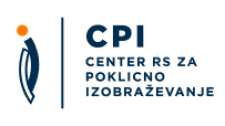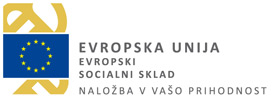Magister akademski oblikovalec tekstilij in oblačil/magistrica akademska oblikovalka tekstilij in oblačil
Selected qualifications
| Name of qualification | Name of qualification: Magister akademski oblikovalec tekstilij in oblačil/magistrica akademska oblikovalka tekstilij in oblačilAdd to comparison |
|---|---|
| Translated title (no legal status) | Translated title: Master of Arts in textile and clothing design |
| Type of qualification | Type of qualification: Master’s degree |
| Category of qualification | Category of qualification: Educational Qualification |
| Type of education | Type of education: Master's education |
| Duration |
Duration of education:
2 years
|
| Credits | Credits: 120 credits |
| Admission requirements |
Entry conditions:
|
| ISCED field |
Field:
Arts and humanities
|
| ISCED subfield | subfield: fashion, interior and industrial design |
| Qualification level |
SQF Level:
SQF 8 |
- study theoretical and methodological concepts and search for new sources of knowledge using scientific research methods,
- perform critical reflection,
- experiment and communicate various intellectual concepts,
- learn independently in own professional and artistic field,
- demonstrate social and communication skills in leading teamwork, including in the field of interdisciplinary work and research aimed at enriching the basic discipline,
- respond rapidly to new information and plan products with new or improved properties,
- demonstrate professional, ethical and environmental responsibility,
- use modern tools and skills, above all from the ICT field, in everyday professional and artistic/creative work,
- use different specific artistic and visual methodologies and procedures to communicate problems and creations from the field of visual perception,
- demonstrate good optical perception of and sensitivity to forms, patterns and real (natural and urban) and metaphysical (imaginary and illusory) spaces,
- express design ideas confidently through freehand and computer-aided drawing and painting and with 2D and 3D animation,
- analyse, differentiate between and apply the internal artistic structure of individual works of art and design through individual historical stylistic periods,
- adopt various approaches to the visual interpretation of a message, from objective presentation to symbolic, from concrete to abstract, from real to illusory, from unambiguous to contradictory,
- carry out high-quality artistic analysis of works of design and other artistic works from the fields of textile and clothing design and visual communications,
- carry out analytical and comparative research of design and artistic/creative processes and the importance of design-related and artistic form and language,
- study the basic components of artistic thought and language and observe, evaluate and think conceptually from an artistic and design perspective,
- gradually develop their strength and creativity as designers and their own creative personality and worldview,
- combine photographic, typographic and artistic design systems into a common whole,
- critically assess current fashion phenomena and creative activity in the field of fashion journalism and criticism,
- create and design fashion accessories of all types to a high level of quality,
- undertake stylistic work for print media, television and events of various kinds,
- design costumes for television, theatre and film to a high level of quality,
- photograph, film, show and provide commentary for fashion events,
- undertake autonomous artistic activity in the field of creating textile images (patchwork, tapestry), textile jewellery (air lace) and textile spatial plastic installations,
- demonstrate knowledge of and apply scientific methods and procedures in the development of ideas and the resolution of concrete work problems in textile and clothing design,
- convert ideas into the plural linguistic structure of artistic design expression,
- increase the added value of a product and predict market effects,
- use international comparisons and demanding criteria when formulating quality standards for own work,
- create a complex photomontage of a figure, item of clothing or pattern for planning an overall look in costume design or styling,
- interpret historic clothes, cuts and elements in modern clothes.
In order to progress to the second year, students must have completed at least 54 credits.
Third-cycle doctoral study programmes (SQF level 10)
To complete their studies, students must complete all course units in all subjects in which they have enrolled and prepare and defend a master's thesis. The topic of the master's thesis is tied to the chosen main elective subject.
University of Ljubljana, Faculty of Natural Sciences and Engineering
URL
Awarding body URL:Upcoming event
International Conference: 10 years of Slovenian Qualifications Framework
International Conference: 10 years of Slovenian Qualifications Framework Brdo Congress Centre, Predoslje 39, 4000...
© Center RS za poklicno izobraževanje, 2018. All rights reserved
Sitemap General legal notice Cookie Policy Production: ENKI






